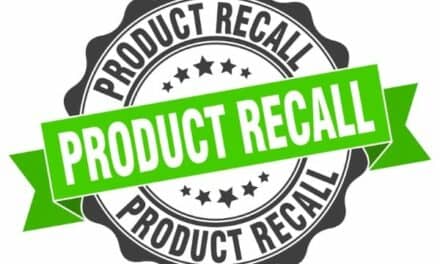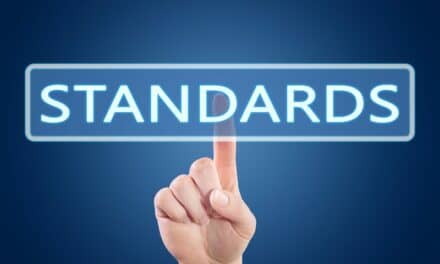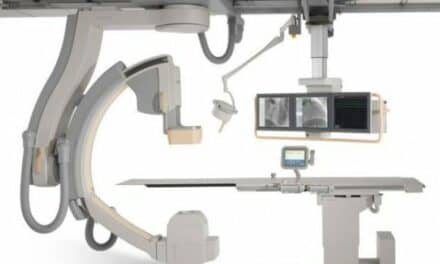Biomedical is a field with a storied past, a stirring present, and, by most measures, a bright future.

24×7 convened a panel of seasoned biomedical veterans to sketch the outlines of biomed’s progress over the years, assess its current status, and make some projections of the shape of things to come. On the panel were:
 • Mary Coker, CBET, clinical engineer from Gloucester, Va, for ARAMARK Healthcare Management Services—Clinical Technology Services (Charlotte, NC). She has 20 years of experience in biomed and currently is president of the Medical Equipment and Technology Association (META). • Mary Coker, CBET, clinical engineer from Gloucester, Va, for ARAMARK Healthcare Management Services—Clinical Technology Services (Charlotte, NC). She has 20 years of experience in biomed and currently is president of the Medical Equipment and Technology Association (META). |
 • Patrick K. Lynch, CBET, CCE, MBA, director of biomedical engineering at Northside Hospital in Atlanta and founding president (1981) of the North Carolina Biomedical Association, with 30 years of experience in biomed. • Patrick K. Lynch, CBET, CCE, MBA, director of biomedical engineering at Northside Hospital in Atlanta and founding president (1981) of the North Carolina Biomedical Association, with 30 years of experience in biomed. |
 • George I. Johnston, MS, PE, CCE, a Portland, Ore-based consultant, who held his first biomed position at Johns Hopkins University Hospital in the early 1950s and his last at University of Oregon Medical School (today known as the Oregon Health Science University) in 1988. • George I. Johnston, MS, PE, CCE, a Portland, Ore-based consultant, who held his first biomed position at Johns Hopkins University Hospital in the early 1950s and his last at University of Oregon Medical School (today known as the Oregon Health Science University) in 1988. |
 • Matt F. Baretich, PE, PhD, president of Fort Collins, Colo-based Baretich Engineering, a health care consulting company. He started in clinical engineering in the mid-1970s, working for various hospitals before becoming a private consultant in 1997. • Matt F. Baretich, PE, PhD, president of Fort Collins, Colo-based Baretich Engineering, a health care consulting company. He started in clinical engineering in the mid-1970s, working for various hospitals before becoming a private consultant in 1997. |
24×7: Let’s start by talking about the way it was. What were some of the defining characteristics of the biomedical engineering profession back in the days when you were a newcomer?
Johnston: Mostly, in the late 1940s and early 1950s, biomeds did things like fabricate original equipment designs for amplifiers, stimulators, and recorders. We even did our own glassblowing. There was a lot of borrowing of innovation from other fields; EEG, for example, started as a result of a doctoral thesis in the 1930s on the design of a system to record earthquake activity.
Lynch: In the old days, there was a lot less medical equipment, and virtually none of it talked to any other piece of equipment. Because equipment was by and large self-contained and freestanding, all you had to do was unplug it, take it back to your shop, put it on the bench, fix it, and carry it back to where it belonged.
Baretich: Equipment maintenance programs of the past were very rudimentary, very simplistic. Joint Commission [on Accreditation of Healthcare Organizations] standards for maintenance were a lot less defined, so we had to figure out on our own ways to meet the standards without it costing us a small fortune.
Coker: Test equipment was rare. I remember spending many hours developing test rigs for equipment and having to rely on facility sources for the information necessary to gain a proper understanding of what needed to be done. Also, hospitals didn’t operate on a business paradigm; they were a community service, and costs didn’t matter as much. As technology improved—and became more sophisticated and more expensive—hospitals grew increasingly concerned about how they would get their [return on investment] from the equipment. In turn, that concern—along with the other aspects of hospitals adopting the business paradigm—drove the biomed world, shaping decisions about what we serviced, how we serviced, and where we put our priorities.
| Online Insight
The America Online-hosted forum (officially a listserv) was started by Michael Kauffman, CBET, biomedical equipment manager of Reading Hospital in Reading, Penn, who continues to function as Biomedtalk-L’s administrator. “Biomedtalk-L has helped countless people get jobs. It’s made manufacturers more honest, and it’s enabled techs and engineers to quickly obtain assistance solving specific repair problems,” Kauffman says. “It’s amazing the amount of knowledge shared in this way on any given day—you have a question, no matter how arcane, and before the day is out you’ll have your answer, often with more detail than you ever dreamed of getting.” Biomedtalk-L numbers 2,450 individuals in 32 countries as members, with a net gain of 20 newcomers a week, according to Kauffman. With so many users, Kauffman finds it necessary to cap the length of each posting at 150 lines of text and to allow no more than five such submissions per day from each member. Even with the limitations, users find plenty to chat about. Hot topics include debates about certification and technician qualifications; exchanges regarding the general roles and responsibilities of individual shops and the hospitals in which they’re based; and, of course, questions about service issues and procedures. “Typically, discussions get going when someone writes in with a question or offers an opinion on a matter that people have strong views about,” Kaufmann says. Rules of etiquette are honored by the vast majority of the posters, but a few flaunt them—much to Kauffman’s dismay. He attempts to keep the conversations civil by blocking the posts of those who engage in over-the-top invective or behave in patently unethical ways. Miscreants can eventually work their way back into Kauffman’s good graces and freely post once again, but it takes a lot of begging on their part and a sincere pledge to, in the future, comport themselves with decency. The idea to launch Biomedtalk-L dates back to September 1997, when Kauffman became frustrated over an inability to secure needed replacement parts for equipment in his hospital. He went online and posted a plea for help at the only biomed-oriented listserv then in cyberspace, one that was oriented to discussions of specific repair problems. However, listserv participants told Kauffman his post was inappropriate for that particular venue. “It occurred to me that our field could benefit from an online forum that would welcome posts like mine, and others,” he says. Happily, Kauffman found Internet service provider America Online willing to give him affordable access to one of its underutilized listserv servers. Soon afterward, Biomedtalk-L was up and running. “It’s an important resource; I’d like to see it continue being that for a long time to come,” Kauffman says. —RS For information on subscribing to Biomedtalk-L, log on to http://hometown.aol.com/ biomedmike/indexa.html |
24×7: There obviously have been vast improvements in the ability of biomeds to do their job in the course of the last half-century. Is there any single development or event that has been most responsible for the improved lot of the current generation of biomeds?
Coker: Computerized management systems. In the old days, biomed administration was entirely manual. You tracked your equipment inventory, your preventive maintenance (PM) records, and your repairs on paper. Fortunately, the amount of equipment you needed to track was small, so you could get by with a manual approach. But not anymore. Now, the sheer volume of what a typical hospital possesses would make paper-based tracking extremely difficult. Ironically, while computerized management systems are now in use just about everywhere, most biomed departments don’t understand how a database works, how to shape it to fit needs—technician needs being different from manager needs—or how to effectively get data out in a meaningful form. As a result, they have an albatross around their necks that may actually be worse than if they were still trying to manage things manually.
Lynch: For me, the most important development was the advent of the online biomed listserv. It is the absolute best way to communicate and obtain useful information. Before that, each hospital’s biomed shop was on its own. If you had problems with a piece of equipment, you could only call the manufacturer, who was often less than helpful. Now, with the listserv, you post a question, and almost immediately you have responses pouring in from biomeds all over the world who can offer solid, useful input.
Johnston: I’d say it was the introduction and wide proliferation of replaceable circuit boards and modules. When troubleshooting and repair were performed at the component level, it could tie up a lot of your time. Now, you can simply swap out a bad board or module. It’s faster and more cost-effective.
24×7: Compare the level of satisfaction you had in the early days of your career against what you are experiencing today.
Lynch: My satisfaction with the job has always been the greatest when I’m the closest to the patient. If I can fix something and see the benefit to the patient, that’s when I’m the happiest. Obviously, those situations occurred earlier in my career before I advanced up the ladder and my role became more administratively oriented, where gratification is less immediate.
Johnston: Fifty years ago it was a different world, but it was terrific for an engineer whose first love is designing and building gadgets.
Baretich: Right now is a better time where satisfaction is concerned because there are so many interesting challenges for us to tackle. Also, many from my generation have moved out of hospitals to become independent consultants—that’s not a way to get rich, but it does enable you to enjoy what you do and so gain even more satisfaction without being locked into any one particular model.
24×7: How are biomeds’ relationships with other departments—information technology (IT), for instance—different today?
Lynch: There was no IT 30 years ago—or, at least, no IT as we know it today—because there were no clinically based computers. The only computer in a hospital was the big mainframe used by administration for financial operations. Now, medical equipment has become so automated that you have trouble telling the clinical care product apart from the computer. As a result, biomed today is obliged to have a relationship with IT—but, in most hospitals, it’s a relationship that is still evolving. In some places, the relationship is very good. Invariably, there’s some level of tension between the departments as the two try to figure out who owns what and who gets the first call when something breaks.
24×7: Some organizations are looking at a convergence of IT and biomed as the solution. Do you think that’s going to be the answer?
Lynch: No. The IT mission is entirely different from the biomedical mission. IT does not deal with real-time patient care, but rather with business operations and records processing. I think the danger is that in convergence, you have biomeds’ focus becoming diluted by involvement with more global applications.
24×7: What’s been your response to it?
Lynch: I recently hired an IT person into my department and gave him the title of medical network support engineer. He’s taking charge of my networked and computerized medical devices. He’s not expected to know the patient interface nor to counsel nurses on how to use it, but he is expected to be our in-house technical expert that my biomedical technicians can go to when they need more detailed knowledge. He’s also responsible for developing and maintaining the relationship between my department and IT—our liaison, in other words. I’m hopeful that, through him, the inherent mistrust IT people have of biomeds can be overcome.
24×7: Apart from the convergence issue, what do you see as the biggest challenge currently confronting your field?
Baretich: It’s the question of how we move forward from the old model of fixing equipment down in the basement to a new model, a new approach where we are a strong, robust part of the team that’s trying to improve patient care.
The problem with being focused on doing PMs and repairs is that those activities have become a commodity. Any time something becomes a commodity, it’s usually bought on the basis of price—the lowest price. That’s served to put us in a spiral of being focused on cost. The remedy is to look beyond PMs and repairs, to look instead at other value-adds that you can bring to the organization, such as in the realm of patient safety, which is on everyone’s mind these days.
24×7: Would you agree with others who say improvement in patient safety hinges on the breaking down of barriers between different parts of the hospital?
Baretich: Yes. And I see that as representing a tremendous opportunity for us to join the team. Whether you’re an engineer or a technician, you have the skills to become an important contributor on that team. However, if you want to be effective in that role, take the time to learn about things like failure-mode-and-effect analysis or root-cause analysis, which are methodologies the others on the team are already using in their corners of the health care system.
24×7: How do you envision the future of biomed?
Baretich: I foresee more cooperativeness, more teamwork with other clinicians. For that reason, my advice for those just coming out of school and starting their careers is to be open to the idea of engaging in lifelong learning. Also, watch what’s happening technologically and administratively so that you can reinvent and reposition yourself to take advantage of change, rather than be threatened by it.
Coker: I am encouraged that BMETs now have a professional organization—META. For as long as this field has been around, it has been driven by outside forces, never by the people in the trenches. That said, I do not think the biomed field will change much over the next 5 years. But 15 or 25 years down the road, it could be very much changed—out of necessity. I predict that biomed departments will more often than not have as managers and supervisors people with strong business skills. This is already happening: I’m aware of even midsized health systems requiring biomed administrators to have a business degree.
24×7: Is that a good thing?
Coker: Yes. Biomed managers with business skills will likely have more influence over the decisions made by senior hospital administrators. I also feel that biomed departments will need to be more professional or even clinical in appearance. Our work environments cannot continue to look like a place where televisions or lawnmowers are repaired. The physical improvements of our work environments will not only have a strong impact on the way the rest of the hospital views us, but will also help biomeds feel that they are contributing to clinical care, that they are vital members of the team responsible for fulfilling their hospital’s mission.
| A Look Back
1970s
1976 Whole-body computed tomography (CT) units first installed for clinical use. 1976 The FDA’s Medical Device Amendments extend its jurisdiction to medical devices. 1980s 1984 First magnetic resonance imaging (MRI) scanners receive FDA approval. 1990s 1991 The American College of Clinical Engineering is founded.
1996 The Health Insurance Portability and Accountability Act (HIPAA) seeks to dramatically improve health care transaction and administrative information systems.4 21st Century 2003 ECRI, a nonprofit international health services research agency, launches Alerts Tracker, an online hazard and recall management system.
References: |
Rich Smith is contributing writer for 24×7.

 Hailed as one of the profession’s most valuable resources, Biomedtalk-L has been helping equipment techs and clinical engineers obtain the insights necessary to successfully address some of the most daunting of challenges since the late 1990s.
Hailed as one of the profession’s most valuable resources, Biomedtalk-L has been helping equipment techs and clinical engineers obtain the insights necessary to successfully address some of the most daunting of challenges since the late 1990s. 1971 Birth of Biomed?1 A report by consumer activist Ralph Nader in the Ladies Home Journal in 1971 adds to mounting speculation that stray electrical currents in hospital medical equipment are causing patient electrocutions. These concerns eventually lead to safety standards for electromedical equipment—and some say the advent of the biomedical equipment technology field.
1971 Birth of Biomed?1 A report by consumer activist Ralph Nader in the Ladies Home Journal in 1971 adds to mounting speculation that stray electrical currents in hospital medical equipment are causing patient electrocutions. These concerns eventually lead to safety standards for electromedical equipment—and some say the advent of the biomedical equipment technology field.  1970 AAMI, founded in 1967, establishes a certification program for biomedical equipment technicians. Three years later, the association does the same for clinical engineers.
1970 AAMI, founded in 1967, establishes a certification program for biomedical equipment technicians. Three years later, the association does the same for clinical engineers. 1982 “Maintenance insurance,” introduced by US Counseling Services (now Thermo Electron Corp), provides a lower-cost alternative to soaring manufacturer full-service contract rates for high-tech devices, such as CT scanners.
1982 “Maintenance insurance,” introduced by US Counseling Services (now Thermo Electron Corp), provides a lower-cost alternative to soaring manufacturer full-service contract rates for high-tech devices, such as CT scanners.  1995 The 100th anniversary of Roentgen’s discovery of the x-ray.
1995 The 100th anniversary of Roentgen’s discovery of the x-ray. 2005 During an address at the Cleveland Clinic in late January, President Bush urges physicians and hospitals to more fully employ electronic medical records, saying that doing so will improve health care and save the nation money.
2005 During an address at the Cleveland Clinic in late January, President Bush urges physicians and hospitals to more fully employ electronic medical records, saying that doing so will improve health care and save the nation money.


